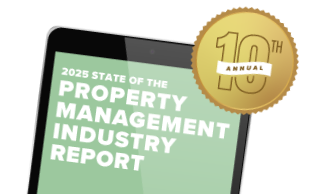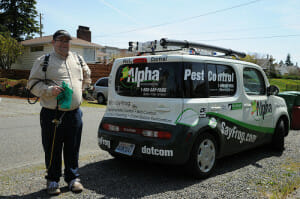Green pest control is here to stay, and property managers should take note. For years, pest control was associated with harsh chemicals, noxious fumes, and routine and regular spraying (done by a masked technician complete with ominous goggles and fitting rubber gloves up to the elbows).
Marketing your property as a clean and environmentally responsible environment for children, pets, and the elderly with a green property management pest control strategy will work not only to your benefit, but to your clients’, and add to the long-term value of your facility as well.
Adopting a green pest control approach that includes IPM is beneficial for several reasons, the paramount one being its effectiveness. Pest populations might initially decrease when traditional pesticides are used, but overuse can create a tolerance with potentially devastating results. The National Pest Management Association has documented the continued rise of bed bug populations, which is largely due to inefficient extermination efforts that led to the bug’s resistance to traditional pest solutions.
Secondly, sustainable living and green lifestyles are in increasing demand among tenants. IPM is a responsible choice for all members of society, including the very young or very old. IPM is also cost-effective, and it is relatively easy to sustain, which means that you can maximize your property’s longevity and value over the years.
Finally, IPM is a healthy choice. By adopting a green pest control solution, you can be assured that the health of your building staff, tenants, and their families is at the forefront of the pest control strategy being implemented.
What is the Integrated Pest Management System?
Briefly, IPM is a proactive method that controls pest problems without resorting to unnecessary chemical use. Instead, it employs a combination of strict sanitation and property maintenance procedures to address and resolve the causes of a pest situation, rather than just treating its symptoms. IPM programs use environmentally-responsible products and procedures. It is a green option that rids your property of pests and helps to preserve and protect the planet as well. As the saying goes, “an ounce of prevention is worth a pound of cure.”
The Environmental Protection Agency (EPA) recommends a four-tiered approach to introducing an IPM program to your housing facility:
- Set action thresholds
- Monitor and identify pests
- Prevention
- Control
First, it is necessary to determine at which point the population of pests has become a potential economic or health threat to residents. Next, in order to effectively solve the issue, a preliminary inspection, preferably in conjunction with a certified pest control company, will help the property manager identify the type of pest in order to come up with a plan of action for the next steps: prevention and control.
An expert in IPM will understand the local pest pressures and populations and work with you to take the first steps of prevention, which often seem like common sense. Minimizing moisture, sealing any vulnerable cracks or openings, keeping breezeways clear of leaves and debris, and maintaining a landscaping routine that eliminates hiding spots for pests all have significant impacts on reducing pest populations without resorting to pesticides that can be potentially harmful to tenants. The last step in implementing an IPM strategy is to evaluate its effectiveness.
Monitor the progress of your efforts: Were they more effective in some buildings and less effective in others? Conduct follow-up inspections and check with residents.
As a property manager, you know that your tenants rely on you to help them enjoy a pest-free environment. Imagine being able to give them that in an environmentally responsible way while reducing their exposure to unnecessary or overuse of traditional pest control products.
When you make the commitment to employ only green IPM solutions, you not only end up with grateful tenants, you also help protect the environment. However, preventing pests through sanitation and maintenance is not a one-person job. In order to successfully employ IPM, tenants must accept their own role in not providing an environment which attracts and harbors pest populations.
Herein lies the biggest challenge for property managers in implementing such a program.
Community Effort
Launching and maintaining a successful IPM system is not a task for just one individual. It starts with choosing the right certified pest control provider, and tenants and building staff need to know and fulfill their own roles and responsibilities as well. In order for green pest solutions to be effective and long lasting, all stakeholders must take sustained, concerted, and coordinated preventive measures.
Following are some activities you can organize for building tenants and personnel to make sure your apartment pest control initiatives stay on track, as well as ways to effectively market your green living initiative among tenants and potential tenants.
- Let your pest control company teach residents. When you decide on the right pest control company, have them conduct a brief informative lecture on their methods, their products, and pest-control philosophy. Print copies of the lecture or post them on your building website for tenants who are unable to attend. If possible, record relevant parts of the lecture and share with tenants on your property’s social media platforms and website. (This has the added benefit of improving your brand as committed to providing a clean, comfortable living environment for tenants.)
- Talk to your residents about green cleaning. Instruct and encourage your tenants to keep their apartments clean and free of pests without using harsh chemicals or other types of self-treatment, as these may conflict with the property management pest control efforts.
- Inspect regularly. Conduct regular, thorough inspections of the exterior and interior of the building, looking for signs of pest infiltration or habitation. Do this especially after a significant climate event such as a big snowstorm or unusually heavy and sustained downpour.
- Update your tenant onboarding. Make sure new residents are aware of your green pest control programs to ensure their cooperation and support.
- Respond to reports of pest infiltration quickly. The sooner you can assess the situation and find a solution, the less time pests have to settle in and spread to other areas of the building. Responding quickly also reinforces the seriousness of effective pest control on your tenants. Leading by example will encourage them to be equally vigilant in their efforts to keep their own areas clean and pest-free.
- Put up posters. Display a list of your property management pest control best practices in common building areas (such as the laundry room or near the mailboxes). If your building has a website, put the list up there as well. Keep everyone vigilant and on the same page regarding this important health and safety issue.
- Keep the green message top of mind. Provide seasonal town hall meetings or newsletters that keep your tenants abreast of the best ways to improve their standard of living while safeguarding against pests. For example: cleaning out gutters in the fall, winterizing your home by sealing cracks, spring cleaning of appliances, the proper way to water plants in the summer, etc. Sample newsletters can be found in this piece about apartments and pest management or bed bugs and common areas.
- Don’t forget about staff training. Train your property manager in IPM and promote it. For more information on pest management training for property managers, visit StopPestsinHousing.org.
As a property manager, you have the responsibility of maintaining clean, pest-free living spaces for your tenants. By adopting and implementing IPM measures, you accomplish this and help protect and preserve the environment as well. Remember to fully inform the residents and building staff about your green pest control policies so as to actively involve and engage them. It truly takes a village to make IPM a success.
Read more on Maintenance

